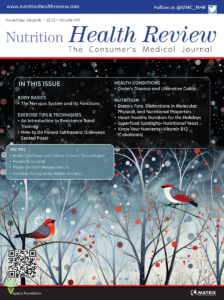 Fluoride is a mineral that plays an important role in keeping teeth healthy. Through remineralization, fluoride repairs damage to enamel, the protective layer of the teeth, thereby making teeth more resistant to decay (caries).1 About 99 percent of fluoride absorbed and retained by the body is stored in the bones and teeth. Although adults only retain about half of absorbed fluoride content, young children can retain up to 80 percent, due to higher amounts being taken up by the bones and teeth.2
Fluoride is a mineral that plays an important role in keeping teeth healthy. Through remineralization, fluoride repairs damage to enamel, the protective layer of the teeth, thereby making teeth more resistant to decay (caries).1 About 99 percent of fluoride absorbed and retained by the body is stored in the bones and teeth. Although adults only retain about half of absorbed fluoride content, young children can retain up to 80 percent, due to higher amounts being taken up by the bones and teeth.2
Recommended Intake
The daily adequate intakes for fluoride are small, ranging from 0.7mg to 2mg for individuals between the ages of 1 and 13 years, and ranging from 3mg to 4mg for people aged 14 years or older. Fluoridated water, foods and beverages prepared with fluoridated water, and dental products (e.g., toothpaste, mouthwash) are the main sources of fluoride.2 Consumption of fluoridated water from local water systems (i.e., tap water), which are recommended to contain 0.7mg/L of fluoride, has been shown to reduce the incidence of dental caries by at least 25 percent.1 Brewed tea is also a good source of fluoride, containing 0.07mg to 1.5mg per cup, even when brewed with distilled water. Other sources of fluoride include coffee (0.22mg/cup), canned shrimp (0.17mg/3oz), raisins, cooked oatmeal, grapefruit juice, and based russet potatoes (all 0.08mg/serving).2 Children aged 6 months to 16 years whose primary water source is not fluoridated and at high risk of dental caries can receive prescription fluoride supplements, which have a fluoride content of 0.25mg, 0.5mg, or 1mg.3
Many toothpastes contain fluoride, which is taken up by dental plaque and enamel. They also raise the fluoride content of saliva 100- to 1,000-fold for 1 to 2 hours, further strengthening the teeth. Fluoride toothpastes typically contain 1,000 to 1,500ppm of fluoride, although prescription-strength formulas can contain as much as 5,000ppm. Active ingredients for these toothpastes include sodium fluoride, sodium monofluorophosphate, and stannous fluoride. Fluoride mouthwash works similarly to toothpaste, and they typically contain 0.05% sodium fluoride, which equates to 230ppm of fluoride. Prescription-strength fluoride mouthwashes are also available. The American Dental Association (ADA) recommends that children under the age of 6 years not use mouthwash to avoid repeated swallowing and excessive fluoride intake.3
Health Risks
Excessive fluoride consumption in infancy and childhood can lead to fluorosis. Fluorosis can only occur before the formation of tooth enamel. Mild cases result in almost imperceptible white spots on the teeth, whereas moderate cases cause mottling and mild staining. Severe fluorosis can cause staining and pitting of the enamel.2,4 Research from of 1999 to 2004 National Health and Nutrition Examination Survey (NHANES) data showed a fluorosis prevalence of 22.8 percent in individuals aged 6 to 49 years, with less than two percent having moderate fluorosis and less than one percent having severe fluorosis.2 Chronic, excessive intake of fluoride can potentially lead to skeletal fluorosis, but this condition is rare in the United States (US). The upper limit of fluoride intake, based on levels associated with dental and skeletal fluorosis, is 10mg per day.2,4 The US Environmental Protection Agency (EPA) has set the maximum allowable limit of fluoride in drinking water at 4mg/L in order to minimize the risk of dental and skeletal fluorosis.4
Nausea, abdominal pain, vomiting, diarrhea, and periostitis might occur with ingestion of high doses of fluoride, typically due to unintentional swallowing of fluoride products in dental offices or inappropriate use of fluoride supplements.2
Editor’s note. Consult with a healthcare professional to determine the diet and dental care routine best suited to your individual needs.
Sources
- American Dental Association. How fluoride helps to prevent tooth decay. https://www.mouthhealthy.org/all-topics-a-z/fluoride. Accessed 20 Sep 2023.
- National Institutes of Health Office of Dietary Supplements. Fluoride. Updated 15 Aug 2023. https://ods.od.nih.gov/factsheets/Fluoride-HealthProfessional/. Accessed 20 Sep 2023.
- American Dental Association. Fluoride: topical and systemic supplements. Updated 14 Jun 2023. https://www.ada.org/en/resources/research/science-and-research-institute/oral-health-topics/fluoride-topical-and-systemic-supplements. Accessed 20 Sep 2023.
- Oregon State University. Fluoride. Reviewed Dec 2021. https://lpi.oregonstate.edu/mic/minerals/fluoride. Accessed 20 Sep 2023.





